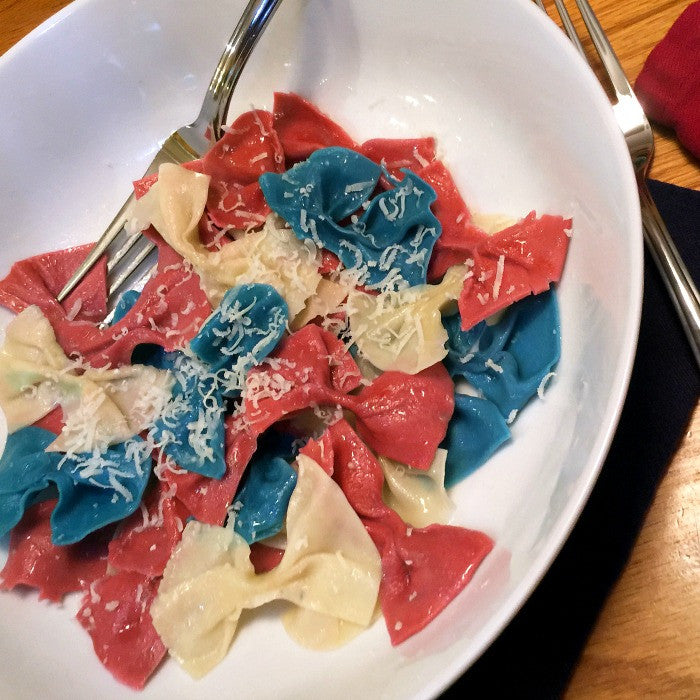Homemade Pasta = Homemade Fun
Making pasta at home is not only delicious but can be a fun family activity. As parents, we teach our children not to play with their food, but this is one time you can make an exception. Even young children can be involved from beginning to end! By letting children get involved in the cooking process, they are more likely to actually eat the meal.
The malleable properties of the dough made it fun for kids to experiment and explore while secretly developing fine motor skills, eye-hand coordination and general concentration as they squash, squeeze, roll, flatten, pull, cut, and poke with pure joy.
3 eggs
2 cups flour
Food coloring (optional, but fun)
1 teaspoon water
Make a mound of the flour with a well in the middle. Crack the egg in the middle and break the egg yolk with your fingers. Slowly combine the flour into the egg. Add food coloring and continue to mix until all flour is incorporated into the dough. Remember that colors will fade somewhat when the pasta is cooked. If the dough seems too dry, sprinkle in some water (up to 1 teaspoon) to achieve the right consistency. When you think the dough feels right, wash and dry your hands and then press your thumb into the dough and if it does not stick to your thumb, then no more flour is needed.

Use the palms of your hands to knead the dough. This is where the kids are most helpful since pasta dough likes to be manhandled. Remind kids not to eat the dough since it contains raw eggs or use pasteurized eggs. As the kids stretch and punch it, they will feel the dough transform as the gluten develops. When the dough is firm and smooth with no visible air bubbles, roll it into a smooth ball and allow it to rest for 15-20 minutes. This gives you time to get the broom or vacuum and do some quick cleaning up while you decide what type of pasta you want to make!
If you have a pasta machine, you can roll the dough into sheets and everyone can take turns cranking. If not, then use a rolling pin to roll the dough as thinly as possible. You can dust the dough with a little flour and let it rest between rolling to get the dough extra thin. Again, this task that can be done with a child’s help (and muscles).
Let the pasta sheets rest for about 5 minutes before cutting and rolling. The plain sheets can be used to make lasagna. With children in mind, a pizza cutter can be used to cut the pasta sheets in lengths for fettuccine or spaghetti. Or the sheets can be rolled and cut like a chiffonade. There are also a wide variety of shapes that you can make by hand:
- Fettuccini are long noodles made by folding and cutting sheets of pasta into long noodles
- Farfalle are made by cutting sheets of pasta into 1.5” squares, and pinching in the middle into “bowtie” shaped pasta
- Orecchiette (mouse ears) can be made by rolling pasta dough into small 1/2" balls and pressing them flat with your thumb to form a little bowl shape
- Garganelli are formed by rolling 1.5” square from corner to corner to create a tubular shape

It is best to choose one shape (or least enough of one shape) to make a serving to allow the pasta to cook evenly. For example, fettuccini takes less time to cook than farfalle or orecchiette. Once cut or shaped allow the pasta to dry for about an hour before cooking. Long noodles can be hung over the back of chairs. Don’t fuss with the pasta while it dries or it may break apart when cooked.
To cook the pasta, boil a large pot of salted water to a boil. Fresh pasta cooks very quickly, so be careful not to overcook. Add pasta to the boiling water and wait for the water to come back to a boil. After about three minutes remove a noodle and test its tenderness. Test a noodle each minute until the pasta is just the way you like it, and then add the sauce of your choice, but you might just find that a little butter and Parmesan are all you need for a delicious homemade dinner!

For more fun and easy recipes, visit welike2cook.com and follow @welike2cook on Instagram/Twitter/Pinterest/Facebook.
Denise Romeo






